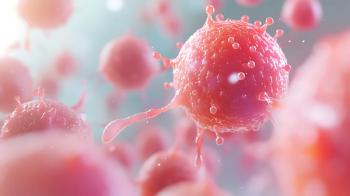
Men With Breast Cancer Have Higher Mortality Rates Than Women
Men with breast cancer had higher mortality than women regardless of cancer type, treatment, and access to care.
Despite being rarer, breast cancer diagnosed in men results in higher mortality rates than in women, regardless of cancer type, treatment, and access to care, according to a new study.
The findings, published in JAMA Oncology, highlight the need for more research specifically focused on male breast cancer.
For the study, the researchers used the National Cancer Database to identify data on patients who received a breast cancer diagnosis between January 1, 2004 and December 31, 2014. In total, the study included approximately 1.8 million patients, 16,025 of whom were men.
Compared with women, men with breast cancer had higher mortality across all cancer stages. Their overall survival (OS) rate was 45.8% (95% CI, 49.5-54.0; P<.001), the 3-year rate was 86.4% (95% CI, 85.9-87.0; P<.001), and the 5-year rate was 77.6% (95% CI, 76.8-78.3; P<.001), according to the study. For women, the OS rate was 60.4% (95% CI, 58.7-62.0; P<.001), the 3-year rate was 91.7% (95% CI, 91.7-91.8; P<.001), and the 5-year rate was 86.4% (95% CI, 86.4-86.5; P<.001).
Interestingly, approximately 85% of male breast cancer is estrogen receptor (ER)-positive, a proportion that is higher than women with breast cancer (75%) and is typically a cancer for which patients have better outcomes.
“This a cancer type where patients usually fare better because we have hormonal treatment,” senior author Xiao-Ou Shu, MD, PhD, MPH, said in a press release. “We have a lot of treatment options for that type of breast cancer. In theory, men should have better outcomes and have lower mortality as women do if the treatment is equally effective.”
Shu noted that this finding could mean there are potential biological differences between ER-positive male and female breast cancers.
Overall, the researchers determined that clinical characteristics and undertreatments were associated with a 63.3% excess mortality rate for men, particularly in the first 3 years after diagnosis and in all patients with early-stage cancer. Sex remained a significant factor associated with overall mortality (adjusted hazard ratio [HR] 1.19; 95% CI, 1.16-1.23), as well as mortality at 3-year (adjusted HR, 1.15; 95% CI, 1.10-1.21) and 5-year (adjusted HR, 1.19; 95% CI, 1.14-1.23) analyses, even after adjustment for clinical characteristics, treatment, age, race/ethnicity, and access to care.
To help eliminate this disparity, the researchers suggested further identifying additional factors, such as biological attributes, treatment compliance, and lifestyle factors, that may contribute to worsened outcomes for men with breast cancer.
References
Wang F, Shu X, Meszoely I, et al. Overall mortality after diagnosis of breast cancer in men vs women. JAMA Oncology. 2019. Doi: 10.1001/jamaoncol.2019.2803
Study finds men have higher mortality rate after breast cancer diagnosis [news release]. Vanderbilt University Medical Center’s website.
Newsletter
Stay informed on drug updates, treatment guidelines, and pharmacy practice trends—subscribe to Pharmacy Times for weekly clinical insights.








































































































































































































